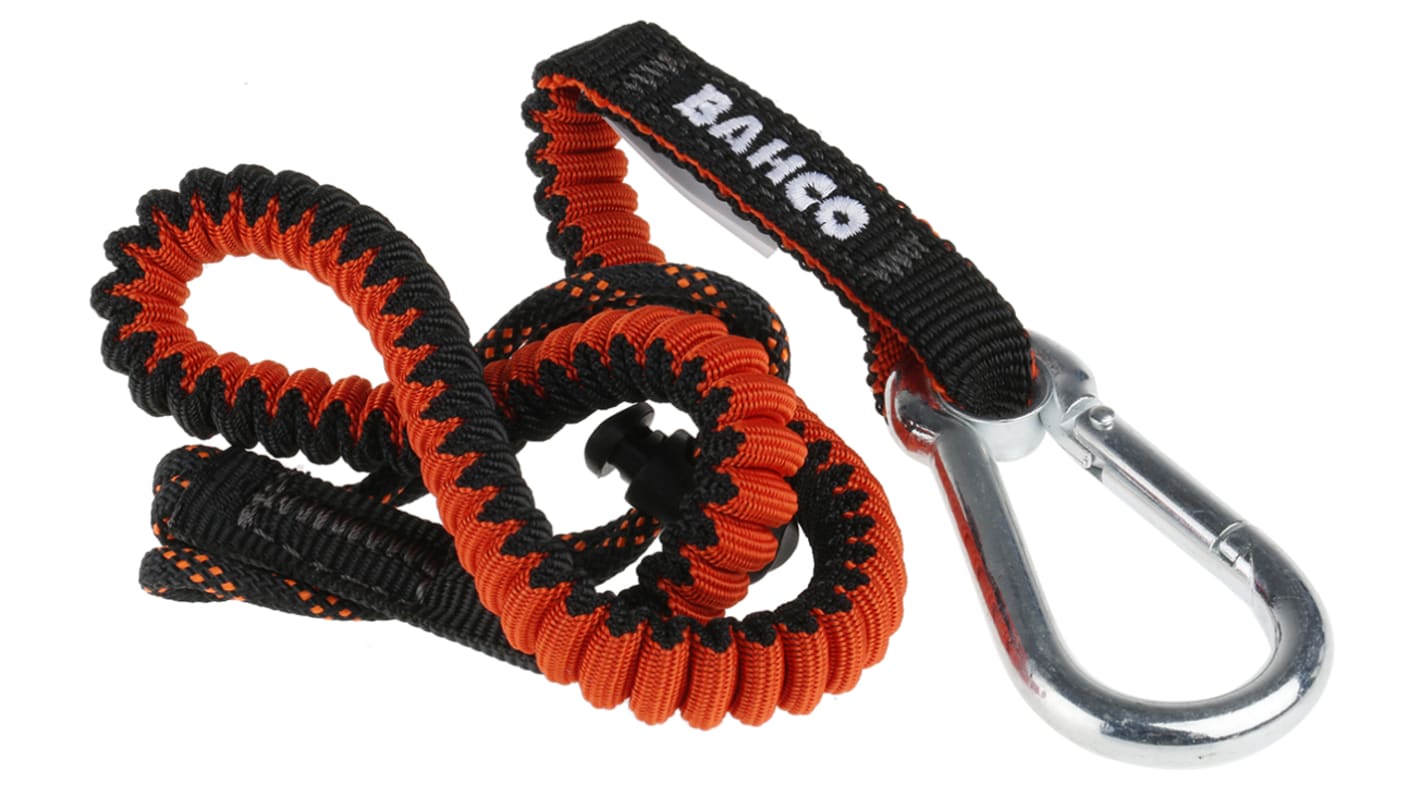Bahco Polyester Tool Lanyard Tool Tether, 3kg Capacity
- RS Stock No.:
- 767-3245
- Mfr. Part No.:
- 3875-LY2
- Manufacturer:
- Bahco
Price Each
HK$283.20
8 In HK stock for delivery within 1 working day(s)*
42 In Global stock for delivery within 3 working day(s)
* Delivery dates may change based on your chosen quantity and delivery address.
FREE delivery for orders over HK$850.00
Units | Per unit |
|---|---|
| 1 + | HK$283.20 |
- RS Stock No.:
- 767-3245
- Mfr. Part No.:
- 3875-LY2
- Manufacturer:
- Bahco
RoHS Status: Exempt
- COO (Country of Origin):
- FR
Bahco Tool Lanyard
The Bahco elastic tool lanyard is a fixed loop lanyard used for secure attach any hand tool. This prevents any tool from falling and harming anyone, causing damage, or disrupting work. The product is capable of supporting tools up to 3kg in weight. It has high strength webbing and self-retracting inner coil for maximum shock absorbency.
The Work at Height Regulations 2005
The Work at Height Regulations 2005, which came into effect on April 2005, applies to all work at height where there is a risk of a fall liable to cause personal injury. The creation of this one, comprehensive set of legal requirements for any work at height is intended to further serve the underlying principle that regulations should provide goal-setting objectives for management rather than prescriptive codes of practice, which can create unnecessary problems. They effectively remove the old 'two-metre rule' division between low and high falls of which there are more reported cases of major injuries resulting from 'low' falls than 'high'.
Essential Requirements
all work at height, including emergencies and rescue, is properly planned and organised
The Work at Height Regulations 2005
The Work at Height Regulations 2005, which came into effect on April 2005, applies to all work at height where there is a risk of a fall liable to cause personal injury. The creation of this one, comprehensive set of legal requirements for any work at height is intended to further serve the underlying principle that regulations should provide goal-setting objectives for management rather than prescriptive codes of practice, which can create unnecessary problems. They effectively remove the old 'two-metre rule' division between low and high falls of which there are more reported cases of major injuries resulting from 'low' falls than 'high'.
Essential Requirements
all work at height, including emergencies and rescue, is properly planned and organised
all work at height takes account of weather conditions that could endanger health and safety
those involved in work at height are trained and competent
the risks from work at height are assessed (using the Risk Management Hierarchy) and appropriate work equipment is selected and used
the risks from fragile surfaces, falling objects and dangerous areas are properly controlled
equipment for work at height is properly inspected and maintained
places of work at height are inspected and checked on each occasion before use
Duty holders must ensure:
Schedules existing places of work and means of access for work at height
collective fall prevention (e. G. guard-rails, toe boards and working platforms)
collective fall arrest (e. G. nets, airbags etc)
personal fall protection (e. G. work restraints, fall arrest and rope access)
ladders and step ladders inspection reports (for working platforms in construction only)
The Regulations include Schedules giving requirements for:
Risk Management Hierarchy
avoid work at height where they can
use work equipment or other measures to prevent falls where they cannot avoid working at height
and
where they cannot eliminate the risk of a fall, use work equipment or other measures to minimise the distance and consequences of a fall should one occur.
There is a simple hierarchy for managing and selecting equipment for work at height.
Duty holders must:
Key Messages
those following good practice for work at height now should already be doing enough to comply with these Regulations
where they cannot eliminate the risk of a fall, use work equipment or other measures to minimise the distance and consequences of a fall should one occur.
There is a simple hierarchy for managing and selecting equipment for work at height.
Duty holders must:
Key Messages
those following good practice for work at height now should already be doing enough to comply with these Regulations
follow the risk assessments that have been carried out (for work at height activities) and make sure all work at height is planned, organised and carried out by competent persons
follow the hierarchy for managing risks from work at height - take steps to avoid, prevent or reduce risks
and
Choose the right work equipment and select collective measures to prevent falls (such as guard-rails and working platforms) before other measures which may only mitigate the distance and consequences of a fall (such as nets or airbags) or which may only provide personal protection from a fall.
Choose the right work equipment and select collective measures to prevent falls (such as guard-rails and working platforms) before other measures which may only mitigate the distance and consequences of a fall (such as nets or airbags) or which may only provide personal protection from a fall.
Features and Benefits
Maximum work-load sew-in warning tag
Fully extended length of 120cm
Non-removable carabineer
Fixed loop with barrel lock
High tenacity polyester
Individual tracking number
Fully extended length of 120cm
Non-removable carabineer
Fixed loop with barrel lock
High tenacity polyester
Individual tracking number
Attribute | Value |
|---|---|
| Type | Tool Tether |
| Maximum Supported Weight | 3kg |
| Material | Polyester |
| Height Safe | Yes |

